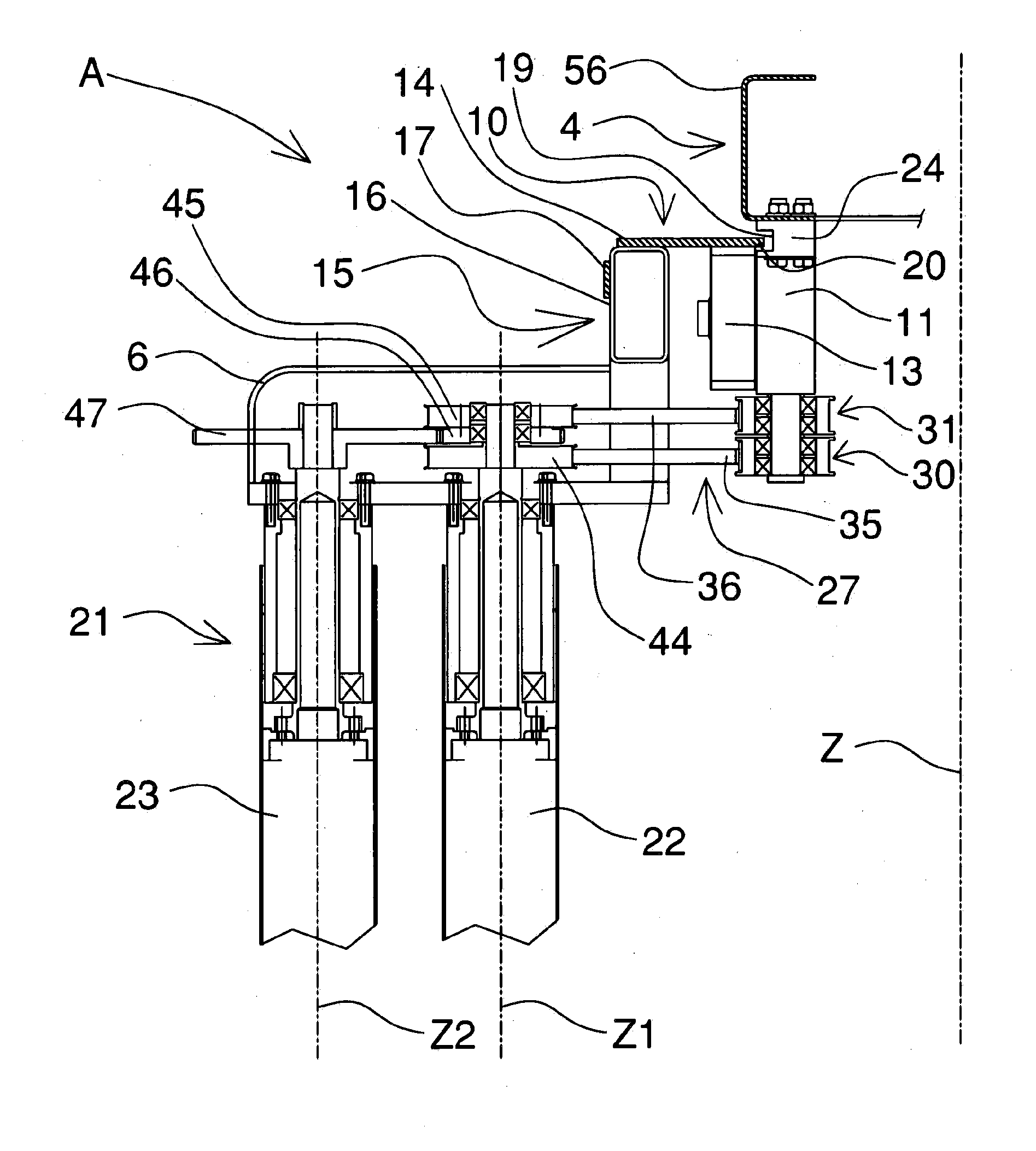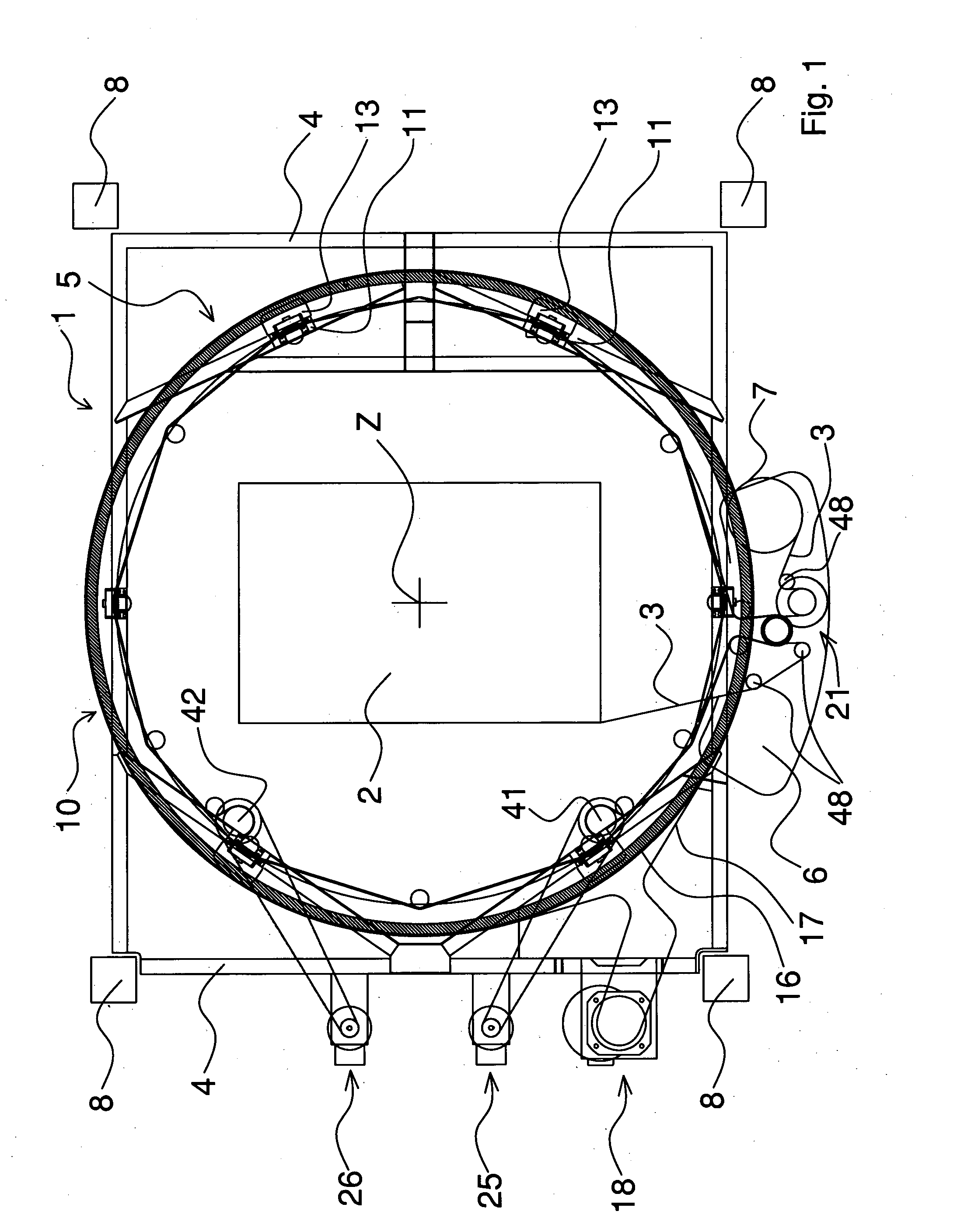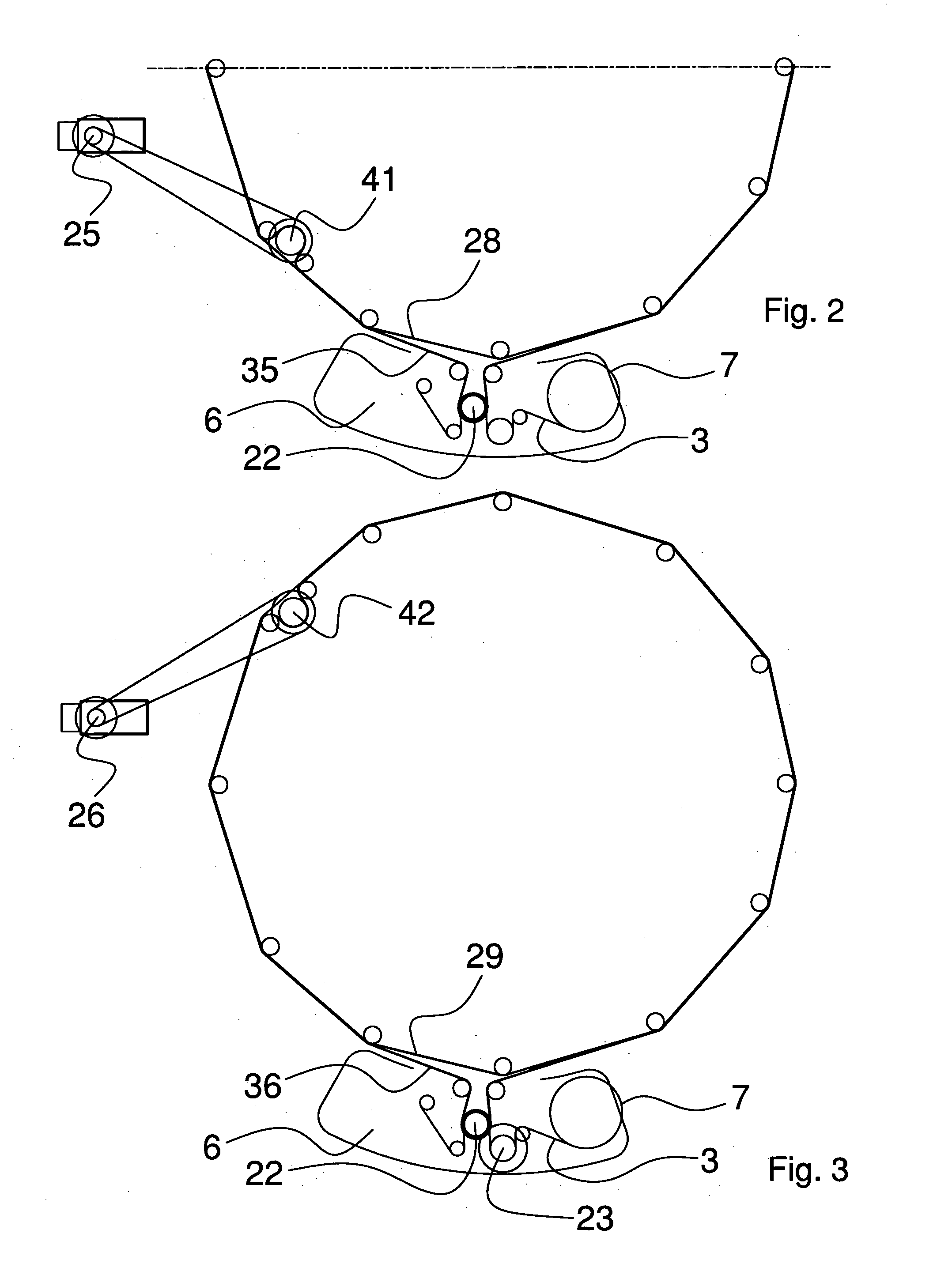Wrapping machine and wrapping methods
a wrapping machine and wrapping technology, applied in the field of wrapping machines, can solve the problems of reducing the rotation speed of the rotating ring, reducing the productivity of the wrapping machine, and generating considerable forces of inertia during operation, so as to prevent tears and breakages
- Summary
- Abstract
- Description
- Claims
- Application Information
AI Technical Summary
Benefits of technology
Problems solved by technology
Method used
Image
Examples
Embodiment Construction
[0069]With reference to FIGS. 1 to 6b, a wrapping machine 1 is shown that is arranged for wrapping a product 2 with a plastic film 3, for example a film of extendible synthetic plastic material wound on a reel 7.
[0070]The wrapping machine 1 comprises a frame 4 supporting a supporting structure 5 of a carriage 6.
[0071]The frame 4, for example bridge-shaped, is associated with a plurality of uprights 8, for example four of them, substantially vertical.
[0072]The uprights 8 are fixable to a floor at a zone in which it is desired to wrap products 2 that are transported there by a conveying device that is not shown, for example comprising a conveyor belt that is slidable below the frame 4.
[0073]Each upright 8 acts as a supporting guide for a carriage, which is not shown, that is associated with the frame 4 and is slidable along an axis that is substantially vertical and substantially parallel to the wrapping axis Z.
[0074]In this way, in use, the carriages move the frame 4 along the wrappi...
PUM
| Property | Measurement | Unit |
|---|---|---|
| tension | aaaaa | aaaaa |
| rotation speed | aaaaa | aaaaa |
| resisting torque | aaaaa | aaaaa |
Abstract
Description
Claims
Application Information
 Login to View More
Login to View More - R&D
- Intellectual Property
- Life Sciences
- Materials
- Tech Scout
- Unparalleled Data Quality
- Higher Quality Content
- 60% Fewer Hallucinations
Browse by: Latest US Patents, China's latest patents, Technical Efficacy Thesaurus, Application Domain, Technology Topic, Popular Technical Reports.
© 2025 PatSnap. All rights reserved.Legal|Privacy policy|Modern Slavery Act Transparency Statement|Sitemap|About US| Contact US: help@patsnap.com



